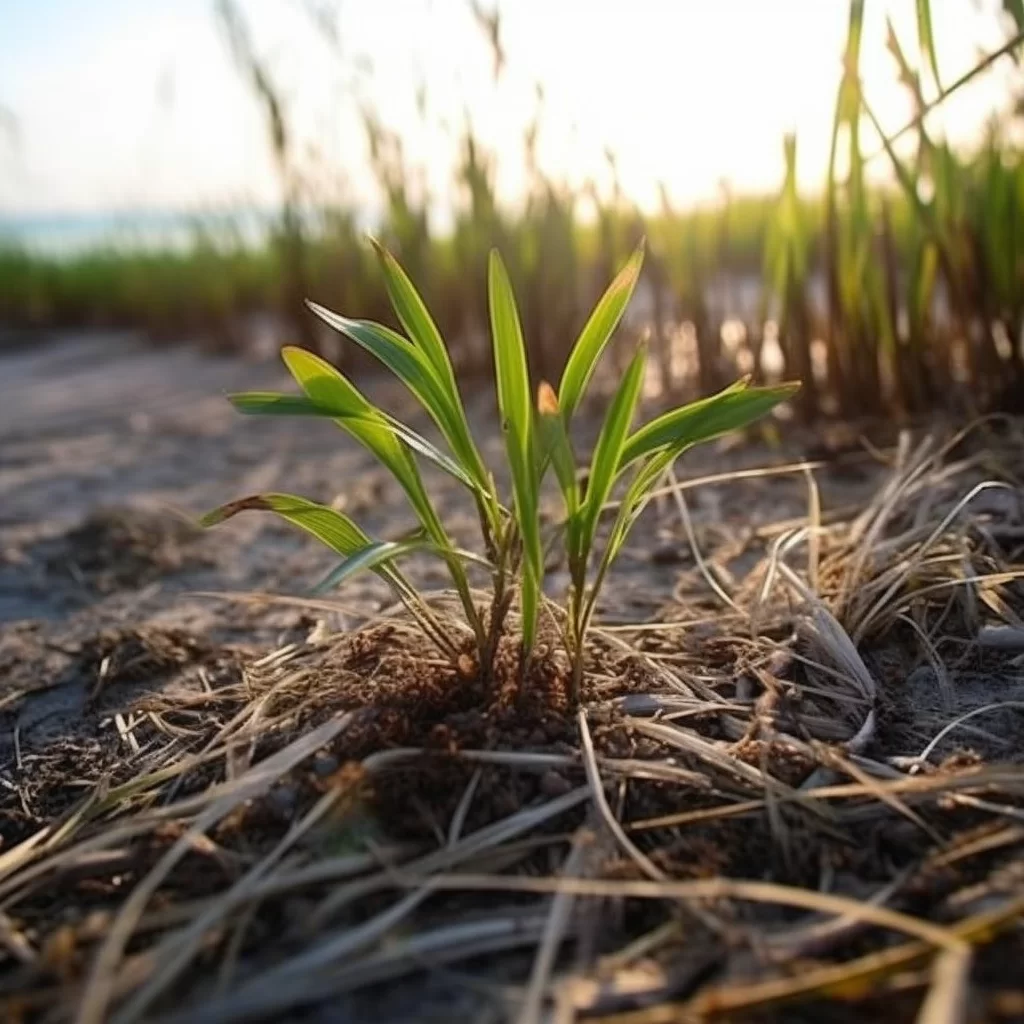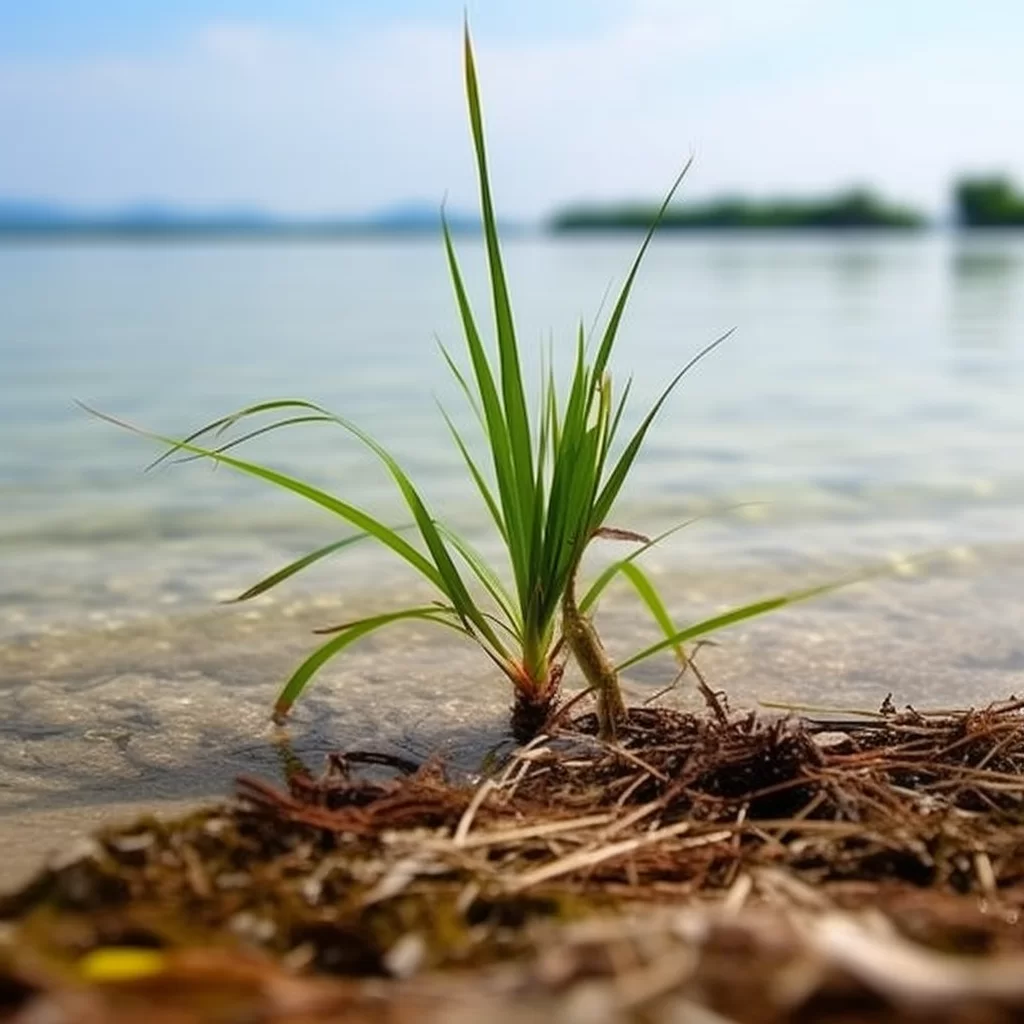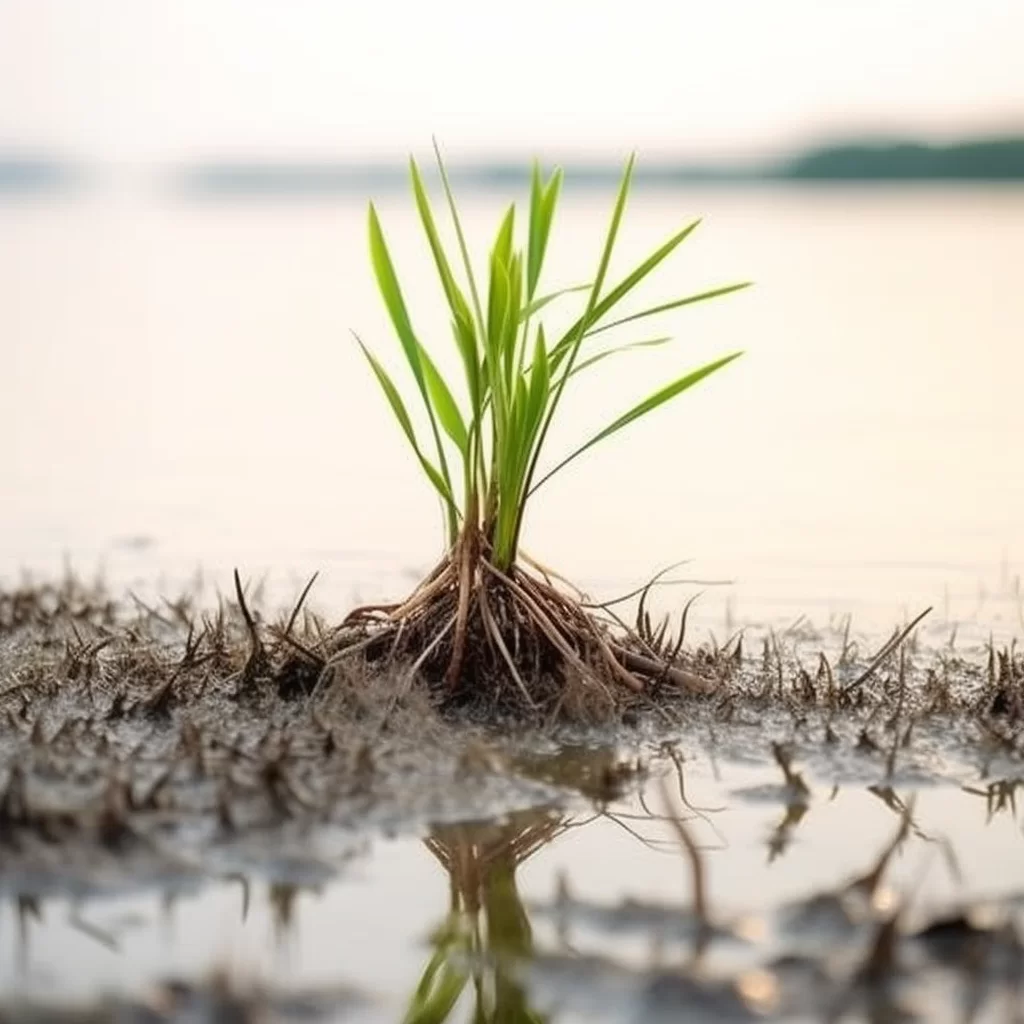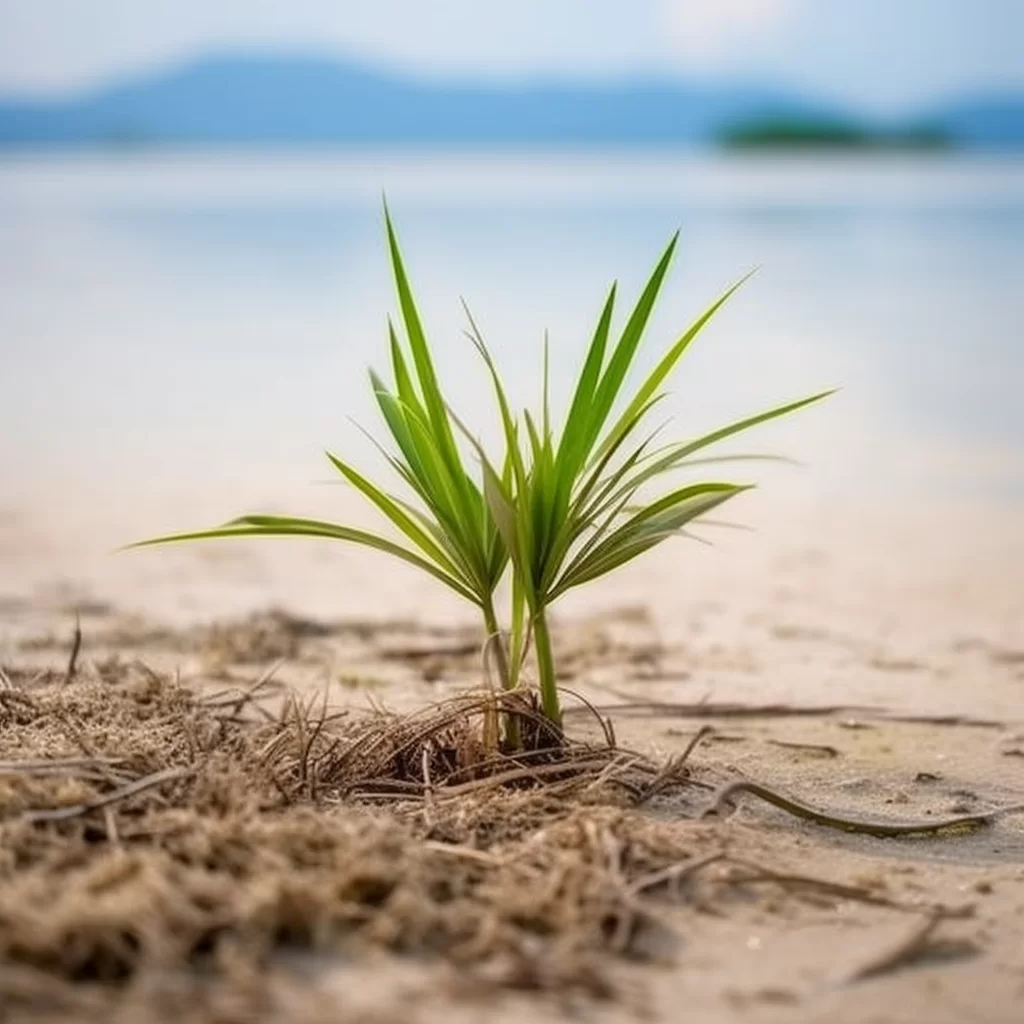Story of Day :
Contents
The Seagrass Plant: A Complete Guide and Care Tips
Seagrasses are essential plants that play a crucial role in preserving the health and equilibrium of our oceans.
Even though they may not be as well-known as other marine organisms such as whales or coral reefs, their significance cannot be denied.
Seagrasses provide critical sustenance and shelter for several marine species, which makes them indispensable to the food chains and life cycles of various aquatic creatures.Furthermore, seagrasses are vital for stabilizing soil and preventing erosion along coastlines.
This is especially important in protecting communities from severe natural disasters like storms or rising sea levels.
Consequently, seagrass beds serve as an essential component of coastal ecosystems by maintaining the balance and well-being of both land-based environments and ocean habitats.
Without these incredible underwater plants, countless communities around the world would face greater vulnerability to environmental hazards caused by climate change and other human activities.In conclusion, despite their lesser-known status compared to other marine organisms like coral reefs or whales, seagrasses have immense importance in sustaining oceanic ecosystems worldwide.
These plants provide crucial support for several marine species’ survival while also serving an indispensable role in stabilizing soil along coastlines.
By recognizing their value and taking steps to protect them from human-induced threats such as pollution or habitat destruction, we can ensure that our oceans remain healthy environments capable of supporting diverse aquatic life forms now and into the future.Seagrasses are often underrated for their role in supporting the marine ecosystem.
Aside from being a sanctuary for various fish species, they also offer other benefits that are not commonly known.
Seagrasses act as carbon sinks by absorbing carbon dioxide from the atmosphere, which helps reduce the harmful effects of climate change on oceans.
Additionally, they can filter out pollutants like excess nutrients from runoff and prevent the occurrence of harmful algal blooms or “red tides”.
These essential ecosystem services provided by seagrass have significant advantages for both humans and wildlife, highlighting the importance of protecting these underwater plants. The significance of seagrass goes beyond its aesthetic value as an underwater plant.
The significance of seagrass goes beyond its aesthetic value as an underwater plant.
Its ecological role is crucial in sustaining marine life and reducing negative human impacts on our environment.
By serving as a refuge for diverse fish species, absorbing carbon dioxide to regulate climate change effects on oceans, and filtering out pollutants to improve water quality, seagrass contributes positively to both human livelihoods and biodiversity conservation efforts.
Protecting seagrasses requires recognition of its ecological worth and commitment to sustainable approaches that ensure long-term preservation of this vital marine habitat.Seagrasses have a vital role in maintaining the health of our oceans and sustaining the creatures that live in them.
These plants offer ecological benefits that are crucial for keeping our waters clean and healthy.
They prevent the erosion of shorelines by anchoring themselves to the seabed with their extensive root systems, which also help to trap sediment and pollutants.
Moreover, seagrasses act as natural filters by absorbing excess nutrients from surrounding waters, reducing the risk of harmful algal blooms.Without seagrasses, many marine animals such as turtles, dugongs and manatees would struggle to survive as they rely on these plants for food and shelter.
Furthermore, seagrass meadows serve as important breeding grounds for several species of fish and invertebrates.
Thus it is essential that we prioritize conservation efforts towards these ecosystems to ensure their protection from human activities such as dredging or pollution run-offs.
By doing so we can maintain a healthy marine environment for all its inhabitants now and into the future.
 It is essential that we understand the importance of preserving seagrass and take measures to ensure their survival for future generations.
It is essential that we understand the importance of preserving seagrass and take measures to ensure their survival for future generations.
By supporting conservation efforts, we can protect seagrass habitats and the multiple species that rely on them for survival.
Seagrasses are not only critical to marine biodiversity but also play a crucial role in maintaining a healthy planet.Investing in seagrass preservation is crucial as it supports marine life, helps maintain water quality, and contributes to carbon storage.
Seagrasses trap carbon at a rate of 35 times that of tropical forests, making them an important tool in mitigating climate change.
However, human activities such as pollution, coastal development and climate change have resulted in their decline worldwide.
Therefore, it is vital that public awareness about the significance of these plants increases so that more people will support conservation efforts towards protecting our oceans’ health and ensuring biodiversity’s existence for years to come.Seagrasses are an integral component of the ocean’s ecosystem, and they provide numerous benefits to marine life.
These plants offer a safe haven for small fish and invertebrates by providing a protective environment that shields them from larger predators.
Furthermore, seagrass leaves act as nurseries for their growth and development.
They also serve as a vital food source for herbivorous animals like manatees and dugongs.Apart from offering shelter to marine life, seagrasses play a crucial role in maintaining the balance of the ocean’s ecosystem.
These plants help reduce wave energy and protect coastlines from erosion caused by storms.
By filtering sediments and pollutants, seagrasses improve water quality, making it more habitable for aquatic creatures.
In addition to these ecological benefits, many communities rely on seagrasses for subsistence fishing activities that provide livelihoods for local residents while also contributing to the economy of coastal regions. Seagrasses have a root system that plays a vital role in stabilizing sediments on the seabed.
Seagrasses have a root system that plays a vital role in stabilizing sediments on the seabed.
These roots trap particles that would otherwise float around in the water column, reducing turbidity levels in the water.
This process is incredibly important as it allows sunlight to penetrate through clear waters, which many organisms rely on for photosynthesis.
By supporting biodiversity and enhancing water quality, seagrasses play an essential role in keeping our oceans healthy.The benefits of seagrasses extend beyond their ability to trap sediment and reduce turbidity levels.
As an integral component of marine ecosystems, seagrass contributes significantly to maintaining healthy oceans by providing habitats for a diverse range of marine life forms.
From sharks and turtles to small fish and crustaceans, countless species depend on these underwater meadows for survival.
Therefore, we should recognize the critical contribution of this plant species to preserving ocean biodiversity and make efforts towards conserving them.Seagrasses are vital to the health of our marine ecosystems.
Not only do they provide shelter for juvenile fish species, but they also play a crucial role in stabilizing sediment on seabeds.
If we fail to protect these plants from human activities such as overfishing or pollution-induced habitat degradation, we risk losing some of the most important services that seagrasses offer.By protecting seagrass habitats, we are ensuring that our oceans remain healthy and vibrant with thriving wildlife populations essential for sustaining life on our planet.
While it may be tempting to exploit these resources for short-term economic gain, it’s imperative that we recognize the long-term value of preserving them for future generations.
Through careful management and conservation efforts, we can guarantee a sustainable future where seagrasses continue to play their important roles in supporting marine life and maintaining healthy ecosystems.

What is a seagrass plant?
Seagrasses are flowering plants that grow entirely underwater in shallow coastal waters.
They belong to the family Posidoniaceae, Zosteraceae, and Hydrocharitaceae.
There are around 60 different species of seagrasses found throughout the world’s oceans.
Caring for your seagrass plant
If you’re lucky enough to have a seagrass lawn or bed in your backyard or aquarium, there are several things you can do to help keep it healthy:
- Provide plenty of sunlight: Seagrasses need sunlight to survive.
Make sure they’re placed in an area where they’ll get plenty of natural light.
- Maintain water quality: Like all aquatic plants, seagrasses require clean water free from pollutants.
Regularly check pH levels and nitrate levels.
- Avoid over-fertilization: Too much fertilizer can cause excessive growth that can smother other plants or lead to algal blooms that can be harmful to wildlife and even humans as well.
The benefits of growing Seagrass Plants
Growing seegrass has its own benefits such as;
- Erosion prevention:: The extensive root systems help bind sediment together which prevents erosion caused by waves and currents.
- Water filtration: Seagrasses can filter pollutants from the water and improve water quality, providing a healthier environment for other plants and animals.
- Habitat: Seagrass beds serve as nurseries and habitats for many species of fish, crustaceans, and other marine animals.
- Biodiversity: The presence of seagrass meadows increases biodiversity in the area by providing shelter for a variety of species.
The threats to seagrass plants
Despite their importance, seagrasses are under threat from human activities such as coastal development, pollution, boating activities that can damage or destroy habitats by eroding sediment or uprooting grasses.
In conclusion
Growing seagrass plants require proper care to keep them healthy while they offer tremendous benefits to our oceans’ ecosystems.
As responsible individuals concerned about our environment’s well-being, it’s essential we protect these crucial underwater plants against possible threats that could result in their extinction.